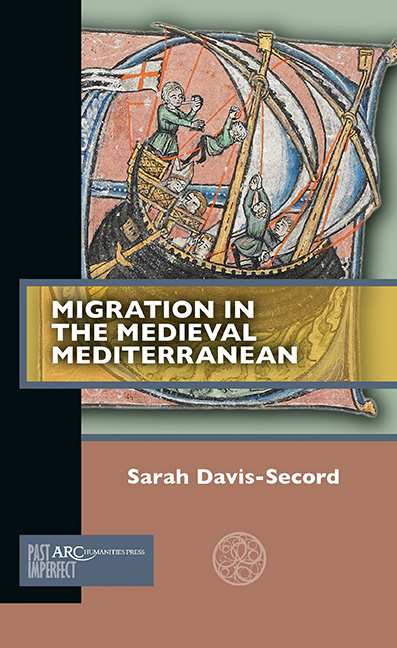Book contents
- Frontmatter
- Contents
- Introduction
- Chapter 1 Refugees from the Islamic Conquests
- Chapter 2 Hadrian and Theodore
- Chapter 3 St. Elias the Younger
- Chapter 4 Constantine the African
- Chapter 5 Jewish Refugees from the Norman Invasion
- Chapter 6 Merchants
- Chapter 7 Imam al-Mazari and Other Muslim Scholars
- Chapter 8 Unnamed Sicilian Girl
- Chapter 9 George of Antioch and Other Immigrants to Sicily
- Chapter 10 Moses Maimonides
- Chapter 11 Religious Converts
- Conclusion
- Further Reading
- Frontmatter
- Contents
- Introduction
- Chapter 1 Refugees from the Islamic Conquests
- Chapter 2 Hadrian and Theodore
- Chapter 3 St. Elias the Younger
- Chapter 4 Constantine the African
- Chapter 5 Jewish Refugees from the Norman Invasion
- Chapter 6 Merchants
- Chapter 7 Imam al-Mazari and Other Muslim Scholars
- Chapter 8 Unnamed Sicilian Girl
- Chapter 9 George of Antioch and Other Immigrants to Sicily
- Chapter 10 Moses Maimonides
- Chapter 11 Religious Converts
- Conclusion
- Further Reading
Summary
These few examples of medieval migrants and their stories represent many of the most common reasons that medieval people undertook the expensive, dangerous, and uncertain path of migration across the Mediterranean Sea. There were certainly other reasons why people may have done so, and surely more individuals and groups who migrated than we know about from surviving sources. Peasants, for example, who moved from rural villages to the newly revitalized urban centres helped fuel the growth of cities in the central Middle Ages. Likewise, itinerant artisans and other economic migrants were part of the building boom of the period. Some long-distance merchants who brought trade goods from far away over land and sea may have chosen to settle abroad and start new lives rather than returning home. And to be sure, the triumphant conquerors and settlers of new lands—crusaders, for example, who remained in the conquered territories of the Levant, or the Magyars who moved westward from the Eurasian steppe region to settle in present-day Hungary—were part of medieval population movements more broadly.
But the patterns of individual migration seem clear: most migrants crossed the Mediterranean because of fear for their safety or personal freedom in the wake of regime change or after falling into disfavour with local authorities. Many others moved to find a profitable place to live and work among co-religionists, to set up business or to marry someone from another locale. Migration over long distances, especially that undertaken as an individual or as a family group, was not easy and often resulted in feelings of alienation in the new land. It appears that medieval people, like modern migrants, typically only migrated when circumstances seemed dire enough to make it seem like the only option.
And far more numerous were the medieval people who travelled or relocated for reasons that we might not consider voluntary migration, including forced exile, enslavement, or abduction. While some such moves involved isolated individuals who were captured and sold into slavery—like St. Elias the Younger—many more were the groups who were forcibly relocated or simply exiled from their homelands. For the most part, these expulsions were based on a group's religious identity.
- Type
- Chapter
- Information
- Migration in the Medieval Mediterranean , pp. 103 - 106Publisher: Amsterdam University PressPrint publication year: 2021



